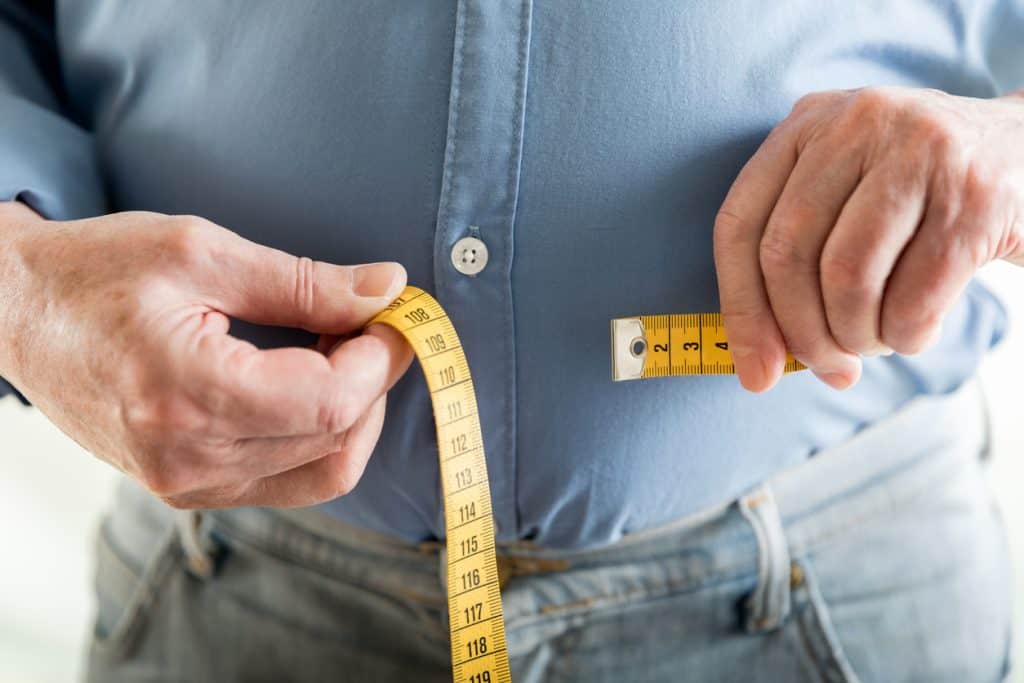
Over the last few years there have been many health promotions and add campaigns focusing on ‘Toxic Fat’. They are usually designed to have that shock factor – Zooming in on abdominal fat or showing internal fat on the heart and liver. Scary and sometimes a bit gross.
The technical term for ‘toxic fat’ is visceral fat. Visceral means organ, so it’s the fat that is hanging around your heart, liver, pancreas and all the other organs in your abdomen.
So what makes it toxic?
For many diseases like Type 2 Diabetes, heart attack, stroke, non-alcoholic fatty liver, kidney stones and even cancer, high visceral fat is a large risk factor. Basically, the fat in and around your organs impacts your organ’s ability to function effectively!
Visceral fat secretes chemicals called adipokines, which in certain scenarios can cause insulin resistance in our liver and in the muscles throughout the body. This makes it difficult for your body to process carbohydrates effectively and can lead to Type 2 Diabetes. Visceral fat is also associated with higher triglycerides and LDL cholesterol. These types of fats in the blood contribute to blockages of the arteries which cause heart attack and stroke.
The breadth of impact of visceral fat is a little scary.
OH NO! How do I know whether I have toxic fat?
There are several ways that we can use to ‘guesstimate’ a person’s visceral fat levels, including:
- A high BMI (your weight in relation to your height)
- A high waist to hip ratio (carrying more body fat around your tummy instead of around your bum)
- A high body fat percentage (measured with an electro impedance scale or through skinfold measurements)
While these things can indicate that you might have more visceral fat, they don’t provide an accurate measure of how much is there. They also lack the precision to tell us how it might be changing with adjustments to diet and exercise.
This is where the InBody body composition scanner really steps into its own. The InBody scanner provides you with an accurate picture of your body and where it’s storing fat. It goes beyond saying ‘you’re more likely to have high amounts of visceral fat’ and allows us to say “you have approximately “X” cubic centimetres of visceral fat”. That’s a far more accurate gauge.
For some, determining how much visceral fat you have can be clarifying and provides some motivation to make changes and see that number decrease. For me personally, I am a data, list and tracking fiend, and this sort of information is really valuable.
What can I do about it?
Find out where you stand
Getting an InBody Scan at The Healthy Eating Clinic can give you the baseline data to track change. It can be frustrating jumping on the scales each day, seeing fluctuations of 500g or 1kg and not knowing whether that’s fluid, muscle, fat or food. A body scan allows you to know where you stand and then focus your energy into the practical things that will make a difference – eating well and exercising consistently each day.
Get on track
The research on visceral fat risk factors consistently show that even small increases in movement can help reduce body fat, including visceral fat. So the aim is not volume but frequency and consistency.
Tracking your movement through a pedometer or smart watch is a fantastic way to increase your awareness of how much (or how little we are moving). I found that without tracking I could easily sit at my desk, my car, my couch for the majority of the day and only take 3000 steps. Knowing this information meant that I could set a small goal to achieve consistently. Starting with aiming for 5000 steps every day. Then I increased to 7, 9, 10 and now 11, 000 steps on average. It takes conscious effort. I have to get up from my desk and do a lap of the building a couple times a day, go for a walk at lunch and walk while doing some odd jobs at home.
You can track in other ways. It might be tracking how many times you get to the gym in a week or how many times you fit a 10-minute bout of movement in in a day. Where ever you are currently at is okay. Gradually increasing any movement will help to reduce visceral fat.
Be aware, not wary
Unfortunately, there aren’t any special foods that will eliminate visceral fat. While there are lots of studies examining if individual food chemicals can help to reduce our visceral fat levels, the evidence is sparse and often inconclusive.
If no one food is going to reduce or increase visceral fat, healthy eating is then about looking at the big picture and making changes to habits, not just to foods.
Becoming aware of your habits is the first step to making change.
Keep a food and awareness journal to get an accurate gauge of what you do eat in a day / week as well as why you eat it.
The very act of being aware of our food choices can help us to make better choices. It can also help highlight where the stumbling block is so that we can target that. There’s no point stressing about perfecting breakfast if binging in the evening is your largest barrier (although eating enough during the day could be helpful with night time snacking, if your snacking because you’re hungry, which is why being aware of the reason for a food choice is so valuable). Increasing your awareness of food choice won’t reduce visceral fat overnight, but it will lay the ground work for positive habit change.
If you are looking at your food journal thinking “I think I’m doing okay with food, so why aren’t I seeing body changes”, that’s the time to come and speak to the team at The Healthy Eating Clinic. We can help you to sift through all of the confusing nutrition information and come up with practical meal and snack ideas to improve your body’s composition.
If you’d like further help with your nutrition please click below:



